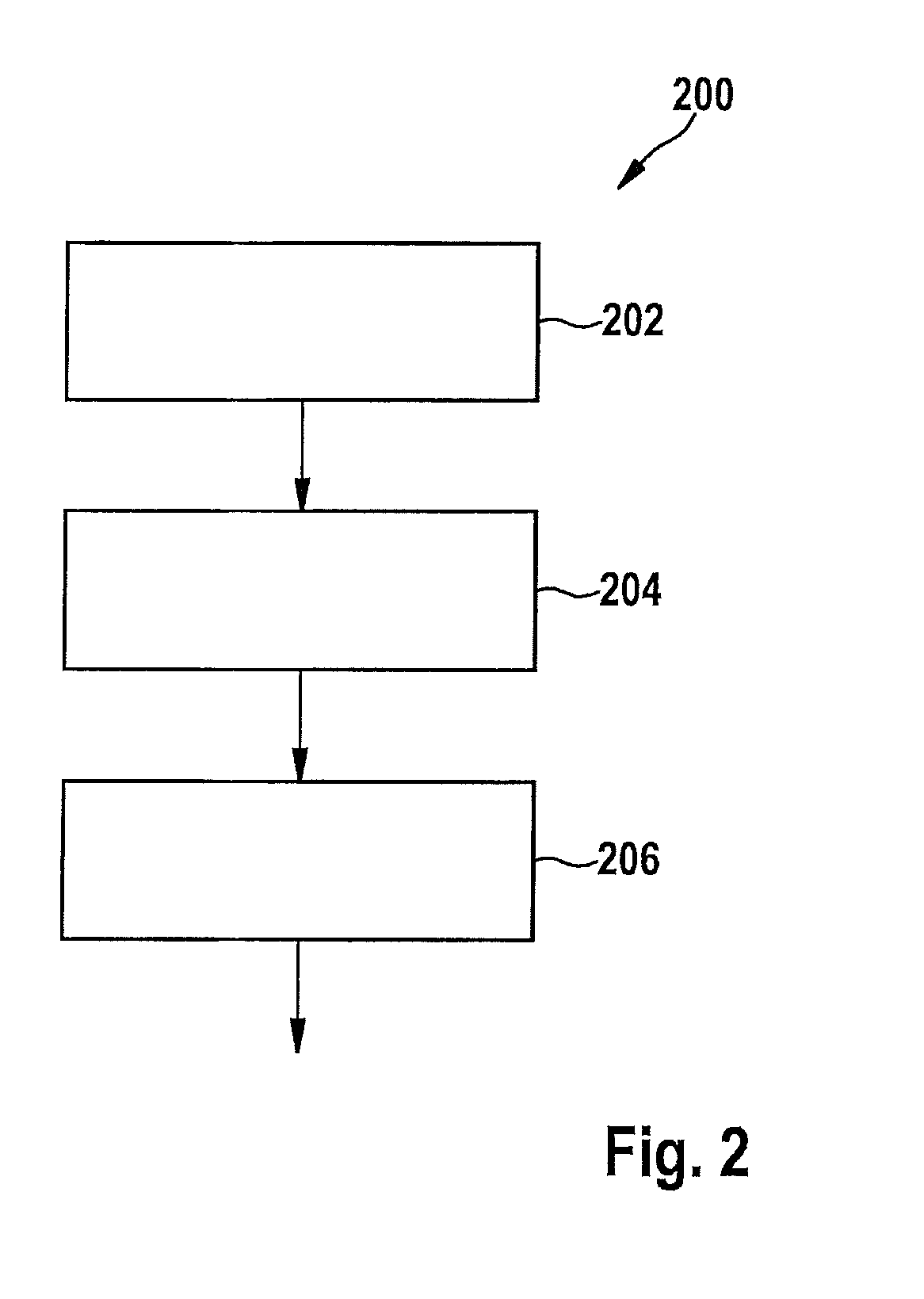[0006]The present invention is based on the finding that, for example, a high-beam mode or another mode for emitting light at a high emission angle from headlights of a vehicle may be reactivated by a control unit if other road users may no longer be dazzled. For this purpose, the control unit may take into consideration how probable it is that a new road user will appear in a short interval after the disappearance of the last road user. The probability may influence a holding time, of how rapidly the high beams are switched on again, after another vehicle has exited from an illumination range of the main headlights. Alternatively or additionally, a speed for a change of the emission characteristic may also be changed as a function of the probability. For the probability, more generalized traffic on the traveled road, for example, in the form of a detected traffic density, i.e., for example, the number of vehicles which travel on a road section, may be taken into consideration. If a large amount of traffic is detected, the probability of dazzling another road user is high and the holding time may be longer or the speed of the change of the emission characteristic may be greater. If little traffic is detected, the probability of dazzling the other road user is low and the holding time may be shorter. Expressed more generally, a control parameter for controlling an emission characteristic of the headlight may be determined in response to the ascertained traffic density. The control command may then be provided to control an emission characteristic of the headlight using the control parameter. The fact may be utilized that, for example, via the adaptation of at least one control parameter, a dynamic response setting is possible, i.e., a setting of the speed of the change of the illumination characteristic of the headlights. This is reasonable in particular in the case of adaptive high-beam assistants such as AHC (i.e., a floating transition between low beams and high beams) and CHC (i.e., dazzle-free high beams). For example, a dynamic response may be decreased (i.e., a speed of the change of the emission characteristic of the headlight may be reduced), if the traffic density is high.
[0015]The object on which the present invention is based may also be achieved rapidly and efficiently by this embodiment variant of the present invention in the form of a control unit.
[0019]According to one advantageous specific embodiment of the present invention, in the step of determination, a speed of a change of the emission characteristic may be determined as a control parameter, in particular the speed of the change of the emission characteristic being reduced if the traffic density increases. Such a specific embodiment of the present invention offers the advantage of very simple automatic setting of the dynamic response of the change of the emission characteristic of the at least one headlight to increase the comfort for the driver.
[0024]The method may also include a step of suspending the control command, which is executed in response to an entry of a further foreign vehicle into the illumination range. Dazzling of other road users may thus be avoided and / or the comfort of the driver of the host vehicle may simultaneously be increased, if the emission characteristic of the headlight is again switched back to the first emission characteristic in response to the suspension.
[0025]According to one particular specific embodiment of the present invention, in the step of ascertaining, an imminent entry of the vehicle into a curve is also ascertained, in the step of providing, the control command also being carried out using the ascertained imminent entry into the curve, in particular the control command being emitted in such a way that a maximum range to be illuminated by the at least one headlight on the roadway is reduced before the entry of the vehicle into the curve. Such a specific embodiment of the present invention offers the advantage of adaptation of the emission characteristic which is particularly comfortable for the driver, since in the case of a high traffic density, the probability of a vehicle appearing after the curve is greater than in the case of a lower traffic density. The driver of the vehicle would otherwise have to manually change the emission characteristic swiftly during or shortly after traveling through the curve, which means a sometimes significant stress for the driver, on the one hand, and may also mean endangerment of the traffic safety due to the distraction from the traffic events, on the other hand.
[0026]A computer program product having program code, which may be stored on a machine-readable carrier such as a semiconductor memory, a hard drive, or an optical memory, and which may be used to carry out the method according to one of the above-described specific embodiments when the program is executed on a computer or a device, is also advantageous.
 Login to View More
Login to View More  Login to View More
Login to View More 


